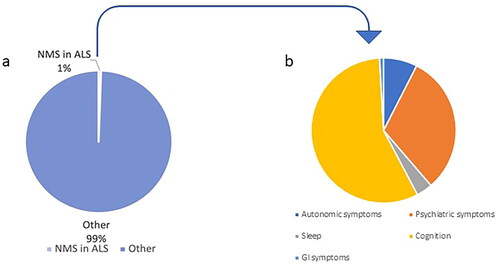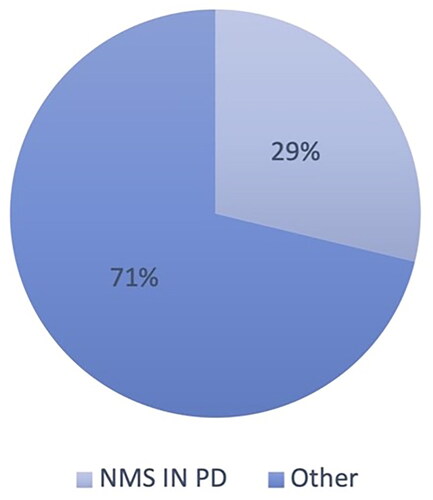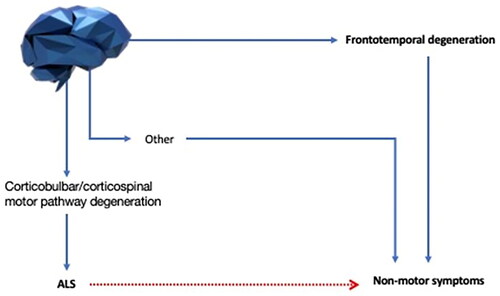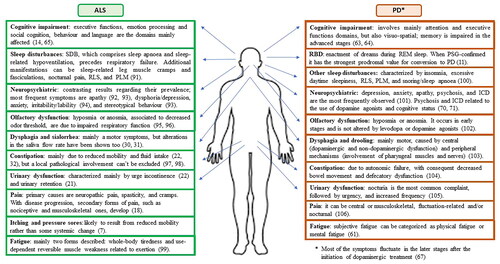Figures & data
Figure 1 Percentage of studies on non-motor symptoms in ALS, compared to studies focused on other aspects of ALS, based on publication counts. (a) The pie chart shows different areas of research in ALS. The search generated 2,210 papers dedicated to the study of non-motor symptoms in ALS, out of a total of 388,000 publications in ALS. (b) Research on different non-motor symptoms in ALS. The search generated 33551 papers for ALS, 3260 papers dedicated to cognition, psychiatric symptoms, and pain in ALS, out of a total of 5331 publications on non-motor symptoms of ALS. Search keywords: ‘ALS’, ‘non-motor symptoms’, ‘pain’, ‘cognition’, ‘sleep problems’, ‘psychiatric symptoms’, ‘gastrointestinal symptoms’, and ‘autonomic symptoms’. Search performed on 19/04/2023 (2010–2023, PubMed). ALS: amyotrophic lateral sclerosis.

Figure 2 Percentage of studies on non-motor symptoms in PD, compared to studies focused on other aspects of PD, based on publication counts. Search keywords: ‘PD’, ‘non-motor symptoms’. Search performed on 16/05/2022 (2010–2022, Google scholar). PD: Parkinson’s disease.

Figure 3 Defining non-motor symptoms in ALS. Non-motor symptoms in ALS can be caused by motor impairment (red line) or neurodegeneration outside the corticobulbar and corticospinal pathways and their lower motor neuron outflows (blue lines). Symptoms secondary to motor degeneration might have a trivial explanation, and our main interest should be focused on the non-motor symptoms arising from an underlying neurodegenerative process affecting areas different from the motor pathway. We therefore define non-motor symptoms as the ones that originate from these non-trivial processes. Among these, frontotemporal degeneration is the best studied, but it is now time to extend our knowledge to other non-motor symptoms.

Figure 4 The spectrum of non-motor symptoms in ALS and PD. ALS: amyotrophic lateral sclerosis; PD: Parkinson’s disease. SDB: sleep-disordered breathing. RLS: restless leg syndrome. PLM: periodic limb movements. REM: rapid eye movement. RBD: REM sleep behavior disorder. PSG: polysomnography. ICD: impulse control disorder.


